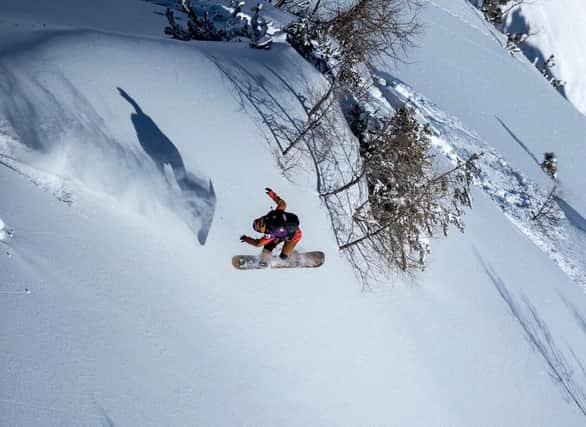Lockdown reveals the creativity of the extreme sports community


Broadly-speaking, the response of the extreme sports community to the coronavirus pandemic can be broken down into three phases. The first we might characterise as a mixture of confusion and frustration, as trips and contests had to be postponed and cancelled at short notice. During the first couple of weeks of March, the situation was evolving so rapidly that at times it felt like a struggle to keep up with what was on and what was off. On 12 March, for example, the Freeride World Tour announced that the climax of its season, the 2020 Verbier Extreme ski and snowboard contest, would go ahead as planned later that month “in accordance with the Cantonal and Communal authorities.” Less than 24 hours later, however, the event was cancelled, leaving competitors and spectators scrambling to change their travel plans.
The second phase, much more entertaining than the first, we might describe as mild amusement – a period in which lockdown still felt novel and when athletes with a sudden surplus of time and energy started videoing themselves doing silly stunts. Skier Philipp Klein Herrero perhaps takes the prize here for his innovative short film Freeride At Home, which saw him create an entire ski tour movie from the comfort of his bedroom. Using stop-motion animation to give his imagination free rein and a ceiling-mounted camera to turn a bedsheet lying on the floor into a snowy mountainside, he proceeded to climb up and then ski down this imaginary peak wearing all his kit, even throwing in a couple of backflips during his descent for good measure. (At time of writing, the film has clocked up almost three-quarters of a million views on YouTube – a lot more eyeballs than Herrero would ever have been able to attract for a film of him actually skiing.)
Advertisement
Hide AdAdvertisement
Hide AdAfter a few weeks of lockdown, though, we entered a third phase – let’s call it adaptation – and this was where things started to get interesting. All the jokey stunts started to fade away, and in their place we started to see skiers, snowboarders and climbers getting down to the serious business of continuing to practise their chosen disciplines in and around their own homes. Of course, conventional athletes have had to train too, but being an elite runner during lockdown doesn’t require anything like the same level of ingenuity as, say, being an elite snowboarder. Kudos, then, to Team GB snowboarder Jamie Nicholls, who refused to be defeated by a lack of snowy slopes near his home in Guildford and decided to build a miniature dry ski slope in his back garden, with grocer’s turf for snow, a length of plastic drainpipe to practise rail-slides on and a kids’ slide to give him an initial burst of speed.
Similarly, as reported in these pages last week, leading Scottish climber Robbie Phillips might not get to tackle the Karakoram Mountains this summer as he’d hoped, but during lockdown he stumbled upon a world class crack-climbing venue underneath a nondescript concrete bridge in Murrayfield which, in its own way, is providing him with just as much of a challenge as anything he might have found in Pakistan.
Mountain bike fans, meanwhile, will have been green with envy when they saw the incredible dirt jumps track pro rider Matt Jones built in his back garden in Bedfordshire. He’s been cataloguing the painstaking build on his YouTube channel, addressing vexed questions such as how to deal with cracks in your kickers with the same amount of care and attention that a panel member on Gardeners’ Question Time might devote to ways of getting rid of greenfly. The finished course, meanwhile, with all its crazily angled but carefully crafted blocks of earth, would not look out of place in a sculpture park.
All of which feeds into something Final Words has touched on in the past: that so-called extreme sports aren’t really sports at all, but fundamentally creative activities that exist in a grey area somewhere between conventional, lines-on-the-ground sports and the arts. Almost exactly ten years ago in this slot, I discussed this very topic with backcountry snowboarding legend Jeremy Jones. I asked him if he had to put what he does somewhere on the spectrum between landscape painting and baseball, would he put it closer to landscape painting or closer to baseball? “Oh closer to landscape painting for sure,” he said. “To me snowboarding’s not really a sport, it’s a form of expression.”
For the aforementioned extreme artists, then, lockdown has been a period of “creative limitation” that Stravinsky would have recognised – just as he imposed limitations on himself by composing The Rite of Spring without time signatures, so they have been forced to re-think what they do due to the strictures of lockdown. The only reason this recent flowering of creative genius isn’t being recognised as such is because nobody is prepared to stick their neck out and describe it in those terms.